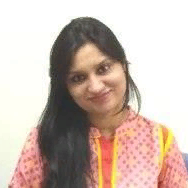International Journal of Image, Graphics and Signal Processing (IJIGSP)
IJIGSP Vol. 9, No. 5, 8 May 2017
Cover page and Table of Contents: PDF (size: 662KB)
Pose Normalization based on Kernel ELM Regression for Face Recognition
Full Text (PDF, 662KB), PP.68-75
Views: 0 Downloads: 0
Author(s)
Index Terms
Face recognition, Kernel Extreme Learning Machine Regression, Pose normalization, Virtual Frontal View
Abstract
Pose variation is the one of the main difficulty faced by present automatic face recognition system. Due to the pose variations, feature vectors of the same person may vary more than inter person identity. This paper aims to generate virtual frontal view from its corresponding non frontal face image. The approach presented in this paper is based on the assumption of existence of an approximate mapping between the non frontal posed image and its corresponding frontal view. By calculating the mapping between frontal and posed image, the problem of estimating the frontal view will become the regression problem. In the present approach, non linear mapping, kernel extreme learning machine (KELM) regression is used to generate virtual frontal face image from its non frontal counterpart. Kernel ELM regression is used to compensate for the non linear shape of the face. The studies are performed on GTAV database with 5 posed images and compared with linear regression approach.
Cite This Paper
Tripti Goel, Vijay Nehra, Virendra P. Vishwakarma,"Pose Normalization based on Kernel ELM Regression for Face Recognition", International Journal of Image, Graphics and Signal Processing(IJIGSP), Vol.9, No.5, pp.68-75, 2017. DOI: 10.5815/ijigsp.2017.05.07
Reference
[1]W. Zhao, R. Chellappa, P. J. Phillips, and A. Rosenfeld "Face recognition: a literature survey," ACM Computer Survey, vol. 35, pp. 399–459, 2003.
[2]S. Chen, X. Tan, Z.H. Zhou, and F. Zhang, "Face recognition from a single image per person: a survey," Pattern Recognition, vol. 39(9), pp. 1725–1745, 2006.
[3]A. Pentland, B. Moghaddam, and T. Starner, "View-based and modular eigen space for face recognition," IEEE Conference on Computer Vision Pattern Recognition, pp. 84-91, 1994.
[4]S. McKenna, S. Gong, and J. Collins, "Face tracking and pose representation," British Machine Vision Conference, pp. 755-764, 1996.
[5]Z. Zhou, J. F. Huang, H. Zhang, and Z. Chen, "Neural network ensemble based view invariant face recognition," Journal of Computer Study Development, vol. 38 (9), pp. 1061–1065, 2001.
[6]R. Gross, I. Matthews, and S. Baker, "Eigen light-fields and face recognition across pose", Int. Conference on Automatic Face and Gesture Recognition, vol. 5, pp. 3-9, 2002.
[7]M. Turk, and A. Pentland, "Eigenfaces for recognition" Journal of Cognitive Neuroscience, vol. 3(1), pp. 71-96, 1991.
[8]R. Gross, I. Matthews, and S. Baker, "Appearance-based face recognition and light-fields," IEEE Transactions on Pattern Analysis & Machine Intelligence, vol. 26(4), pp. 449–465, 2004.
[9]V. Blanz, and T. Vetter, "A morphable model for the synthesis of 3D faces," Proc. SIGGRAPH, pp. 187–194, 1991.
[10]Blanz V, Vetter T. Face recognition based on fitting a 3-D morphable model. IEEE Transactions on Pattern Analysis & Machine Intelligence 2003; 25 (9): 1063–1074.
[11]A. S. Georghiades, P. N. Belhumeur, and D. J. Kriegman, "From few to many: illumination cone models for face recognition under variable lighting and pose," IEEE Transactions on Pattern Analysis & Machine Intelligence, vol. 23(6), pp. 643–660, 2001.
[12]D. Jiang, Y. Hu, S. Yan, L. Zhang, H. Zhang, and W. Gao, "Efficient 3D reconstruction for face recognition," Pattern Recognition, vol. 38(6), pp. 787–798, 2005.
[13]M. W. Lee, and S. Ranganath, "Pose-invariant face recognition using a 3D deformable model," Pattern Recognition, vol. 36(8), pp. 1835–1846, 2003.
[14]T. Cootes, K. Walker, and C. Taylor, "View-based active appearance models," International Conference on Automatic Face and Gesture Recognition, pp. 227-238, 2000.
[15]D. L. Martin, and A. Rajwade, "Three-dimensional view-invariant face recognition using a hierarchical pose-normalization strategy," Machine Vision and Applications, vol. 17, pp. 309–325, 2006.
[16]A. Asthana, T. K. Marks, M. J. Jones, K. H. Tieu, and M. V. Rohith, "Fully Automatic Pose-Invariant Face Recognition via 3D Pose Normalization," IEEE International Conference on Computer Vision, pp. 937-944, 2011.
[17]L. Ding, X. Ding, and C. Fang, "Continuous Pose Normalization for Pose-Robust Face Recognition," IEEE Signal Processing Letters, vol. 19(11), pp. 721-724, 2012.
[18]M. D. Marsico, M. Nappi, D. Riccio, and H. Wechsler, "Robust Face Recognition for Uncontrolled Pose and Illumination Changes", IEEE Transactions on Systems, and Cybernetics: Systems, vol. 43 (1), pp. 149-163, 2013.
[19]B. Wang, X. Feng, L.Gong, H Feng,W. Hwang, and J. J. Han, " Robust Pose Normalization For Face Recognition Under Varying Views," IEEE, ICIP pp. 1648-1652, 2015.
[20]X. Zhu, Z. L. Junjie, Y.Dong, Y. Stan, and Z. Li, "High-Fidelity Pose and Expression Normalization for Face Recognition in the Wild," IEEE Conference on Computer Vision and Pattern Recognition (CVPR), pp. 787-796, 2015.
[21]T. Vetter, and T. Poggio, "Linear object classes and image synthesis from a single example image," IEEE Transactions on Pattern Analysis & Machine Intelligence, vol. 19 (7), pp. 733–742, 1997.
[22]T. Vetter, "Synthesis of novel views from a single face image," International Journal of Computer Vision, vol. 28(2), pp. 103-116, 1998.
[23]X. Chai, S. Shan, and W. Gao, "Pose Normalization for Robust Face Recognition Based on Statistical Affine Transformation", ICICS-PCM, IEEE, pp. 1413-1417, 2003.
[24]X. Chai, S. Shan, and W. Gao, "Pose normalization for robust face recognition based on statistical affine transformation," IEEE Joint Conference on Information, Communications and Signal Processing, and Fourth Pacific Rim Conference on Multimedia, vol. 3, pp. 1413 - 1417, 2003.
[25]X. Chai, S. Shan, and W. Gao, "Locally linear regression for pose-invariant face recognition," IEEE Transaction on Image Processing, vol. 16(7), pp. 1716–1725, 2007.
[26]C. K. Hsieh, and Y. C. Chen, "Kernel based pose invariant face recognition," IEEE International Conference on Multimedia and Expo, pp. 987 - 990, 2007.
[27]S. Du and R. Ward, " Component-Wise Pose Normalization For Pose-Invariant Face Recognition," Proceedings of the 2009 IEEE International Conference on Acoustics, Speech and Signal Processing, pp. 873-876, 2009.
[28]H. T. Ho, and Rama. Chellappa, " Pose-Invariant Face Recognition Using Markov Random Fields," IEEE Transactions On Image Processing, vol. 22(4), pp. 1573-1584, 2013.
[29]R. Samet, G. Sakhi, and S., J. Li, "A Novel Pose Tolerant Face Recognition Approach," IEEE International Conference on Cyberworlds, pp. 308-312, 2014.
[30]G. B. Huang, "An insight into extreme learning machines: random neurons, random features and kernels," Cognitive Computing, vol. 6 (3), pp. 376–390, 2014.
[31]G. B. Huang, H. Zhou, X. Ding, and R. Zhang, "Extreme learning machine for regression and multiclass classification," IEEE Transactions on Systems, Man, and Cybernetics, Part B: Cybernetics, vol. 42 (2), pp. 513–529, 2012;.
[32]G. B. Huang, Q. Y. Zhu, and C. K. Siew, "Extreme learning machine: theory and applications," Neuro computing, vol. 70 (1–3), pp. 489–501, 2006.
[33]G. B. Huang, Q. Y. Zhu, and C. K. Siew, "Extreme learning machine: a new learning scheme of feedforward neural networks," International Joint Conference on Neural Networks, vol. 2 (25–29), pp. 985-990, 2004.
[34]K. A. Toh, "Deterministic neural classification," Neural Computing, vol. 20 (6), pp. 1565–1595, 2008.
[35]GTAV face database available: online: https://gtav.upc.edu/research-areas/face-database


